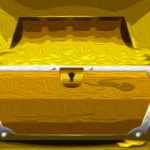
Donor-Advised Fund: A Strategic Charitable Giving Tool
A donor-advised fund (DAF) is a versatile charitable giving tool that allows individuals to donate to charity, receive immediate tax deductions, and recommend grants over time. Picture it as a stepping stone, guiding your charitable assets towards their final destination.
The Concept of a Donor-Advised Fund
A donor-advised fund (DAF) acts as a strategic pit-stop for your charitable assets, providing tax benefits and flexibility in grant recommendations, enhancing your charitable impact.
Maximizing Impact: Donating Appreciated Bitcoin
By donating appreciated bitcoin to a DAF, you can avoid capital gains taxes on the appreciated value, maximizing your impact and tax benefits simultaneously.
The Three Leaps of the Bitcoin Frog
1. Initiating the Deduction Leap
Transferring bitcoin to a DAF allows you to claim a charitable tax deduction for the full fair market value of the bitcoin at the time of donation.

2. Strategic Holding and Decision-making
While resting in the DAF, you can strategize the future of your bitcoin assets, aligning your charitable goals with financial objectives.
3. Final Leap: Gifting to Charities
Directing funds from the DAF to chosen charities simplifies the process for recipients, enhancing operational efficiency without the need for complex infrastructure.
Practical Applications of Donor-Advised Funds
1. Simplifying Donations
DAFs facilitate cash donations to charities, simplifying fund management for recipients and offering tax advantages to donors.

2. Managing Alternative Coins
Donors with diverse crypto portfolios can leverage DAFs to gift alternative coins, optimize tax benefits, and reallocate proceeds according to their investment strategies.
3. Strategic Tax Planning
Combining DAFs with other tax strategies like Roth conversions can amplify tax efficiency, enabling donors to optimize write-offs and front-load charitable gifting.
Innovative Approach: On-Chain Donor-Advised Funds
Introducing the concept of on-chain DAFs, a groundbreaking solution offering enhanced security and transparency through multisignature setups, revolutionizing the management of charitable contributions.
Embracing the Transformative Power of Bitcoin in Charitable Giving
By integrating bitcoin into your philanthropic strategy, you can amplify your impact and financial benefits simultaneously, paving the way for a more strategic and impactful approach to charitable giving.
Take the leap, embrace the power of bitcoin in charitable endeavors, and witness the positive transformation it can bring to the world of philanthropy.
Frequently Asked Questions
Can I keep physical gold in an IRA?
Gold is money, not just paper currency or coinage. It is an asset that people have used over thousands of years as money, and a way to protect wealth from inflation and economic uncertainties. Investors use gold today as part of their diversified portfolio, because it tends to perform better in times of financial turmoil.
Many Americans are now more inclined to invest in precious metals like gold and silver than stocks or bonds. Although owning gold does not guarantee that you will make money investing in it, there are many reasons to consider adding gold into your retirement portfolio.
One reason is that gold historically performs better than other assets during financial panics. Gold prices rose nearly 100 percent between August 2011 and early 2013, while the S&P 500 fell 21 percent over the same period. Gold was one of the few assets that performed better than stocks during turbulent market conditions.
Gold is one of the few assets that has virtually no counterparty risks. If your stock portfolio goes down, you still own your shares. Gold can be worth more than its investment in a company that defaults on its obligations.
Finally, gold is liquid. This allows you to sell your gold whenever you want, unlike many other investments. Because gold is so liquid compared to other investments, buying it in small amounts makes sense. This allows one to take advantage short-term fluctuations within the gold price.
How much gold should your portfolio contain?
The amount of money you need to make depends on how much capital you are looking for. If you want to start small, then $5k-$10k would be great. As you grow, it is possible to rent desks or office space. So you don't have all the hassle of paying rent. Rent is only paid per month.
You also need to consider what type of business you will run. In my case, I run a website-creation company. Our clients pay us between $1000-2000/month and depending on their order. If you are doing this type of thing, it is important to think about how much you can expect from each client.
Because freelance work pays freelancers, you won't likely get a monthly income if you do freelance work. You may get paid just once every 6 months.
You need to determine what kind or income you want before you decide how much of it you will need.
I recommend starting with $1k-$2k of gold and growing from there.
Is it a good retirement strategy to buy gold?
While buying gold as an investment may seem unattractive at first glance it becomes worth the effort when you consider how much gold is consumed worldwide each year.
Physical bullion bar is the best way to invest in precious metals. You can also invest in gold in other ways. It is best to research all options and make informed decisions based on your goals.
For example, purchasing shares of companies that extract gold or mining equipment might be a better option if you aren't looking for a safe place to store your wealth. If you need cash flow to finance your investment, then gold stocks could be a good option.
You also can put your money into exchange-traded funds (ETFs), which essentially give you exposure to the price of gold by holding gold-related securities instead of actual gold. These ETFs usually include stocks of precious metals refiners or gold miners.
How does a gold IRA account work?
Gold Ira accounts are tax-free investment vehicles for people who want to invest in precious metals.
Physical gold bullion coin can be purchased at any time. You don't have to wait until retirement to start investing in gold.
You can keep gold in an IRA forever. You won't have to pay taxes on your gold investments when you die.
Your heirs will inherit your gold, and not pay capital gains taxes. It is not required that you include your gold in the final estate report because it remains outside your estate.
You'll first have to set up an individual retirement account (IRA) to open a gold IRA. After you have done this, an IRA custodian will be assigned to you. This company acts as an intermediary between you and IRS.
Your gold IRA Custodian will manage the paperwork and submit all necessary forms to IRS. This includes filing annual reports.
Once your gold IRA is established, you can purchase gold bullion coins. The minimum deposit is $1,000. If you make more, however, you will get a higher interest rate.
Taxes will apply to gold that you take out of an IRA. If you're withdrawing the entire balance, you'll owe income taxes plus a 10 percent penalty.
However, if you only take out a small percentage, you may not have to pay taxes. There are exceptions. For example, taking out 30% or more of your total IRA assets, you'll owe federal income taxes plus a 20 percent penalty.
Avoid taking out more that 50% of your total IRA assets each year. If you do, you could face severe financial consequences.
Statistics
- If you take distributions before hitting 59.5, you'll owe a 10% penalty on the amount withdrawn. (lendedu.com)
- Gold is considered a collectible, and profits from a sale are taxed at a maximum rate of 28 percent. (aarp.org)
- If you accidentally make an improper transaction, the IRS will disallow it and count it as a withdrawal, so you would owe income tax on the item's value and, if you are younger than 59 ½, an additional 10% early withdrawal penalty. (forbes.com)
- Instead, the economy improved, stocks rebounded, and gold plunged, losing 28 percent of its value in 2013. (aarp.org)
- The price of gold jumped 131 percent from late 2007 to September 2011, when it hit a high of $1,921 an ounce, according to the World Gold Council. (aarp.org)
External Links
investopedia.com
bbb.org
law.cornell.edu
- 7 U.S. Code SS7 – Designation board of trade as contract marketplaces
- 26 U.S. Code SS 408 – Individual retirement accounts
wsj.com
- Saddam Hussein's InvasionHelped Uncage a Bear In 90 – WSJ
- Are you interested in keeping gold in your IRA at-home? It's not legal – WSJ
How To
The History of Gold as an Asset
From the very beginning of time, gold was a currency. It was accepted worldwide and became popular due to its durability, purity, divisibility, uniformity, scarcity, and beauty. Aside from its inherent value, it could be traded internationally. Different weights and measurements existed around the world, however, because there were not international standards to measure gold. For example in England, a pound sterling equals 24 carats. In France, a livre tournois equals 25. Carats of golden. Germany had one mark which equals 28. Carats.
In the 1860s, the United States began issuing American coins made up of 90% copper, 10% zinc, and 0.942 fine gold. This resulted in a decline of foreign currency demand and an increase in the price. At this point, the United States minted large amounts of gold coins, causing the price of gold to drop. The U.S. government was unable to pay its debts due to too much money being in circulation. They decided to return some of the gold they had left to Europe.
Since most European countries were not confident in the U.S. dollar they began accepting gold as payment. After World War I, however, many European countries started using paper money to replace gold. The gold price has gone up significantly in the years since. Even though the price of gold fluctuates, it remains one the best investments you can make.
—————————————————————————————————————————————————————————————-
Based on [POSTTITLE]
by [POSTAUTHOR]


















